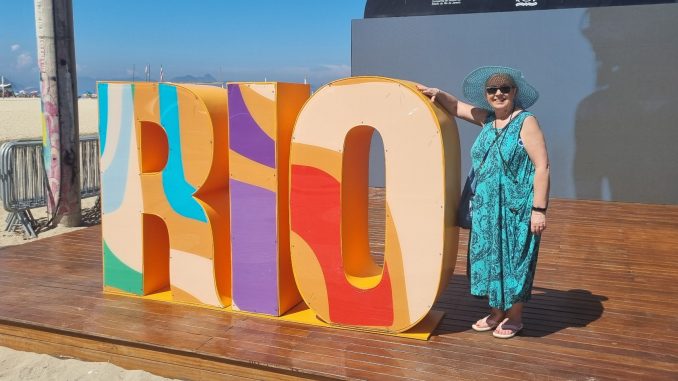
RIO DE JANEIRO



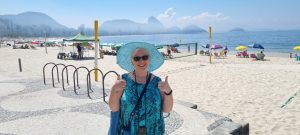



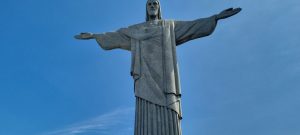
 We stopped for an ice-cream and a drink. We were then treated to some mischievous monkeys. Who stole food of the tourists and even stole the tomato sauce wrappers which they sucked dry. Great fun to watch. The first robbers we had met ! From there we hailed a cab to take us to Lapa and the famous Seleron steps. Absolute fantastic spectacule of many steps covered in tiles of various styles from around the world. The original idea was to brighten up and cheer people in this drab part of Rio. It worked its fantastic.
We stopped for an ice-cream and a drink. We were then treated to some mischievous monkeys. Who stole food of the tourists and even stole the tomato sauce wrappers which they sucked dry. Great fun to watch. The first robbers we had met ! From there we hailed a cab to take us to Lapa and the famous Seleron steps. Absolute fantastic spectacule of many steps covered in tiles of various styles from around the world. The original idea was to brighten up and cheer people in this drab part of Rio. It worked its fantastic.
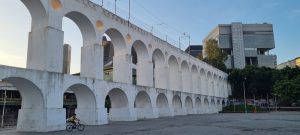
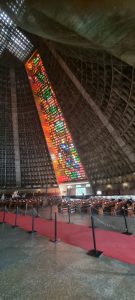
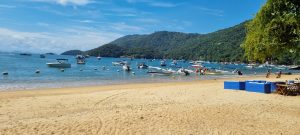

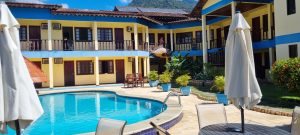
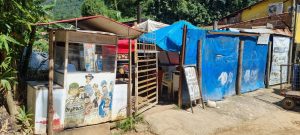
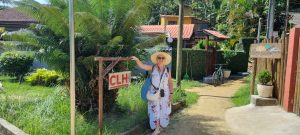

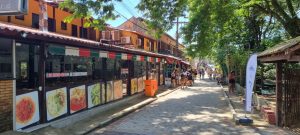
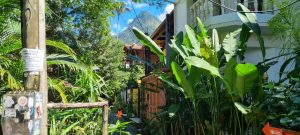
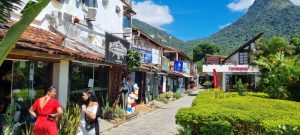
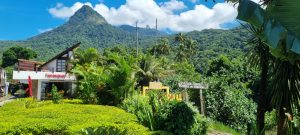

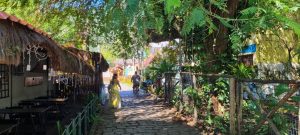
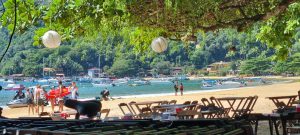

 Kims Birthday on the island of Ilha Grande had been a blast. Certainly one to remember.
Kims Birthday on the island of Ilha Grande had been a blast. Certainly one to remember.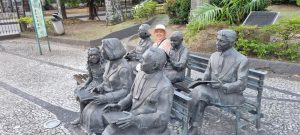 adorned with stunning statues, and nearby stood its Catholic counterpart, a grand pyramid. The expansive Campo de Santana park is a sanctuary for peculiar rodents and numerous cats, tended to by the caring ladies of Rio. The park is also a haven for ducks and Agoutis, which resemble smaller Capybaras. Adjacent to the park, a lively bazaar offers an array of goods at bargain prices.
adorned with stunning statues, and nearby stood its Catholic counterpart, a grand pyramid. The expansive Campo de Santana park is a sanctuary for peculiar rodents and numerous cats, tended to by the caring ladies of Rio. The park is also a haven for ducks and Agoutis, which resemble smaller Capybaras. Adjacent to the park, a lively bazaar offers an array of goods at bargain prices.Situated at the end of Copacabana beach just 5 minutes from our hotel.The forte is built on a headland that originally contained a small chapel holding a replica of the Virgen de Copacabana, the patron saint of Bolivia. In 1908 the Brazilian army started to build a modern coastal defence forte on the headland to protect both the beach of Copacabana and the entrance to the harbour of Rio de Janeiro. The forte, completed in 1914, consists of two armoured cupolas, one holding a pair of 305 mm (12 in) Krupp cannons, and the other a pair of 190 mm (7+1⁄2 in) Krupp cannons.
The name of the turret with the 305mm guns is “Duque de Caxias”, and the guns are named “Barroso” and “Osório”. This cupola is behind and above the one holding the 190 mm guns so that it can fire over them. The 305 mm Krupp guns could fire a shell of some 445 kg (981 lb) up to a distance of 23 km (14 mi). The cupola with the 190 mm guns is named “André Vidal”. These guns could fire from 200 m (220 yd) to 18.2 km (11.3 mi).
The forte also has two small retractable casements on the flanks, each holding a 75 mm (3 in) quick-firing gun with a 180° traverse and a range of 7 km (4.3 mi). Unlike the large Krupp guns, these 75 mm guns are no longer in place. The north casement is named “Antônio João” and the south casement is named “Ricardo Franco”.
On 5 July 1922, the fort was the centre point of the 18 of the Copacabana Fort revolt. It was the first revolt of the tenentista movement, in the context of the Brazilian Old Republic. The rebellious officers turned the fort’s guns on Rio de Janeiro. To suppress the revolt, the government brought the battleships São Paulo and Minas Geraes. On 6 July São Paulo bombarded the forte, firing five salvos and obtaining at least two hits; the forte surrendered half an hour later.[2] Minas Geraes did not fire.
Brazil disbanded its coastal defence artillery branch in 1987. At that time the military deactivated the forte, at least as far as its role as a coastal artillery post was concerned.
Open until 19.00 the forte has an assortment of cafe bars which overlook the Copacabana Beach.

Leave a Reply
You must be logged in to post a comment.